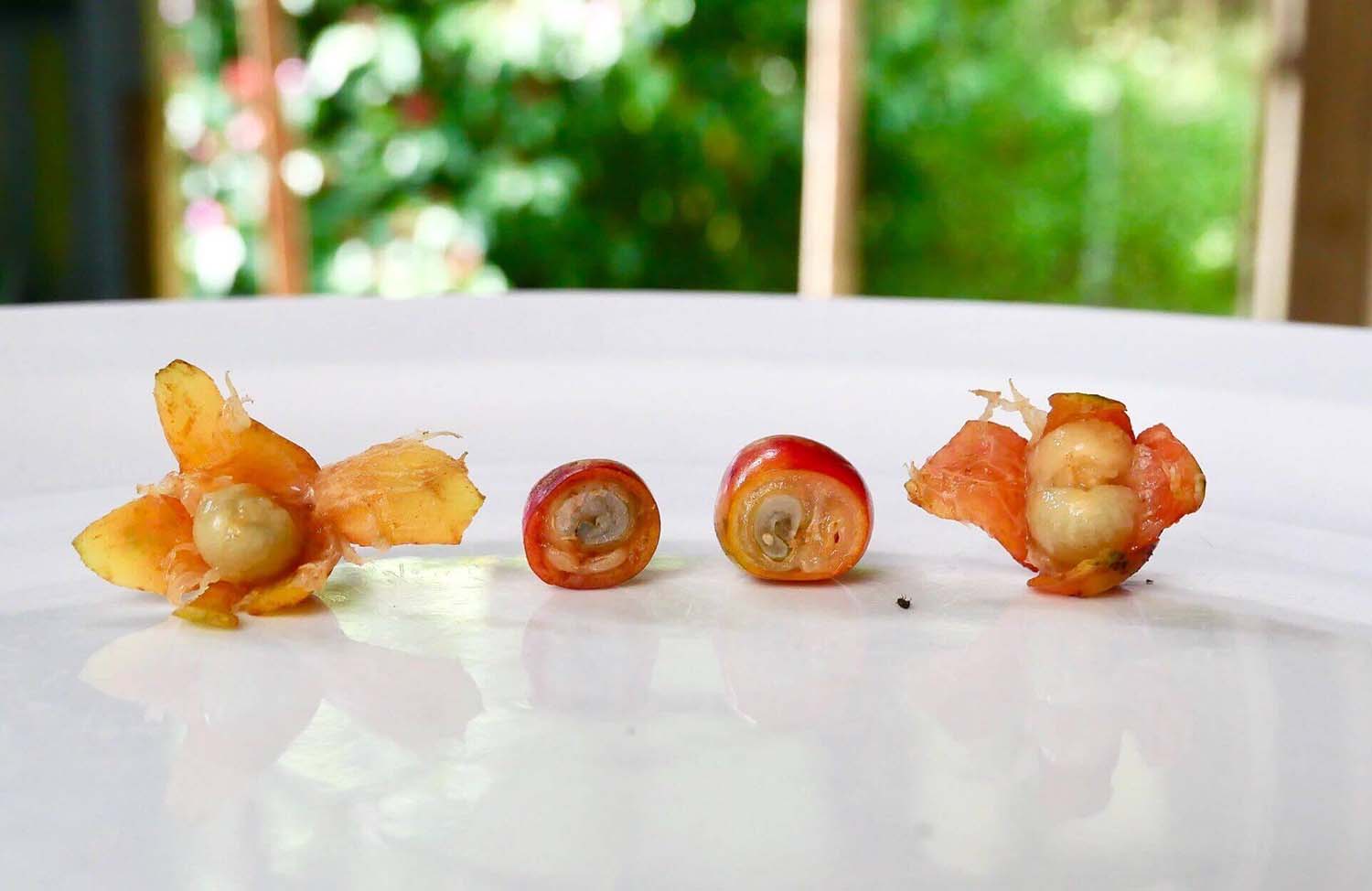When we debuted our logo, some were shocked. Up to then Hawaiʻi brands played on fantasies of paradise. Farming in Puna, we knew a different Hawaiʻi: hard working, self-reliant, resourceful, rugged. That's one of the reasons we chose the boar.The boar symbolizes authenticity, even when it's messy; The airbrush of civilization vs the innate beauty of a wild existence. It acknowledges the difficult crossroads of native and introduced, past and future, having a foot in two worlds. It's a dedication to Hawaiʻi and the wild and beautiful places we have.
In 2013, shortly after winning the Hawaiʻi Statewide Cupping Competition and becoming the first and only Puna coffee growers to earn the award, we finalized our logo - the tusked wild boar. Having just won the competition, it debuted to a new, much larger audience than we ever had before, with mixed reactions: bewilderment, appall, and "oh hell yeah."
Until then, Hawaiʻi brands played up idyllic fantasies of paradise. Farming in the impoverished area of Puna, we knew a different Hawaiʻi: hard working, self-reliant, and resourceful.
Earlier that year, our designer had incorporated a boar into the background of a round of logo mock-ups, each with a different mood, from carefree to bold, artisan to cheerful.

The boar wasn't meant to be part of the logo, but we fell in love. It felt emblematic of our roots, the spirit of the people, the volcanic landscape, and the crossroads of past and future.

The boar in the background came from a historical publication, which we couldn't use. As so, along with our designers, we began the process of conveying, sketching, and revising illustrations of boars, aiming to embody the spirit and fortitude required to sustain in Puna.
The first version of the boar was too cute, much like an illustration from Charlotte's Web. The second too fierce, like a werewolf preparing to transform. Settling on the ideal Puna boar wasn't as simple as it sounds.

Just as good things take time, it took some time to land on a boar that was neither friendly nor fierce, wild but coexisting, a foot between two worlds. After a few iterations, the boar of Big Island Coffee Roasters was born.

History of the Wild Boar in Hawai'i
Over 800 years ago, the first Polynesian voyagers established themselves on the Hawaiian archipelago. They brought with them essential plants and livestock that could not only survive the voyage across the vast Pacific ocean, but support the establishment of new life in a foreign island-home. Thus, the wild boar was brought to the shores of Hawaiʻi.
Symbolism & Mythology of the Wild Boar
This boar is not just an animal; it’s a narrative woven into the very fabric of Hawaiʻi’s history, reaching back over 800 years when the first Polynesians introduced the puaʻa to our shores. It stands as a testament to survival and adaptation, thriving in Puna’s volcanic terrain that challenges all who dwell within it. It is a volcanic and rugged terrain that tests the very best of its inhabitants, reflecting the fortitude and adaptation required to sustain oneself. In this way, our boar symbolizes not just the people of Puna, but also the cultural richness of the land, where it is revered as a kino lau of Lono, the akua of agriculture and abundance, and featured in the epic moʻolelo of Kamapuaʻa and Pelehonuamea, tying it indelibly to the fiery goddess Pele herself.
Culturally, the puaʻa (boar) is a kino lau (bodily form) of the akua (god) Lono, associated with agriculture, fertility, and the beginning of the rainy season. Lono represents the waiwai (abundance) of the land, celebrated and highly esteemed by Native Hawaiians who lived in an agricultural-driven society. In other traditions, Kamapuaʻa was known to assume dual body forms of both man and boar. The moʻolelo (story) of Kamapuaʻa and Pelehonuamea is of legendary stature - Pelehonuamea (Pele of the red earth) the infamous fire goddess who dwells in Halemaʻumaʻu at the crater of Kīlauea, and Kamapuaʻa (pig-child), the mischief-making and adventurous demigod. Through this love saga the boar remains synonymous with the lands of East Hawaiʻi, Kīlauea, and the fire goddess Pele.
A Foot in Two Worlds
To us, the boar embodies authenticity, even when it's messy. It confronts the airbrush of civilization with the innate beauty of a wild existence. It acknowledges the difficult crossroads of native and introduced, past and future, having a foot in two worlds. It's a dedication to Hawaiʻi, the natural world, and the wild and beautiful places we have.
“I do not think the measure of a civilization is how tall its buildings of concrete are, but rather how well its people have learned to relate to their environment and fellow man.”
― Sun Bear, Chippewa




